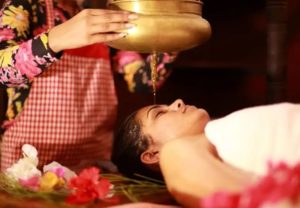Former Khmer Rouge stronghold becomes must-see destination
Cambodia :Want to see Pol Pot’s grave or his broken toilet seat? How about a visit to the house of a feared Khmer Rouge commander known as “The Butcher”?
Welcome to the town of Anlong Veng, a former Khmer Rouge stronghold which hopes to become the next must-see destination on Cambodia’s dark tourism trail, but which faces calls not to glorify its role in the country’s bloody past.
A rectangular mound of earth lined with half-buried glass bottles and protected by a corrugated iron roof marks the spot where Khmer Rouge leader Pol Pot was hastily cremated in 1998.
Aside from a sign asking visitors to “please help to preserve this historical site” there is no information on offer, leaving Cambodian tourist Pov Dara, 27, to ponder the significance of the low-key grave.“I feel sad for the people but not for him,” she decides, after snapping a photo of her relatives flashing the peace sign.
Up to two million people died from overwork, starvation or execution when the Khmer Rouge, led by Pol Pot, attempted to create a communist utopia in the late 1970s.
His cremation site, which attracts some 10 visitors a day, is one of 14 tourist spots the government intends to “preserve and develop” in northern Cambodia’s Anlong Veng.
Other places of interest include leaders’ old homes and a rusty radio truck used to broadcast Khmer Rouge propaganda.
Impoverished Cambodia is no stranger to genocide tourism, with the Tuol Sleng torture centre in Phnom Penh and the nearby Killing Fields of Choeung Ek, where thousands died, among the nation’s most popular attractions.
But while the focus at those sites is on victims of the 1975-1979 regime, Anlong Veng is populated by one-time loyal Khmer Rouge followers, giving it the feel of a town that has found itself on the wrong side of history.
As locals relish the lucrative prospect of welcoming more tourists to the once isolated area, observers stress the need to educate guests about Cambodia’s history – and avoid turning the destination into a Khmer Rouge nostalgia tour.
To that end, the tourism ministry has teamed up with the esteemed Documentation Centre of Cambodia, which researches Khmer Rouge atrocities.
The centre is preparing to publish a guidebook based on the stories of long-time residents and it is training tour guides to provide meaningful information about “what happened and why during the Khmer Rouge regime’s final days”, said the group’s director Youk Chhang. A museum is also planned.
But it is important not to exploit the country’s tragic past, he told AFP.Cambodia’s memories are “not for sale”, he said.“We have the responsibility to ensure that Anlong Veng is a historical and responsible site to educate the public.”
The Khmer Rouge was ousted by Vietnamese forces in 1979, though regime leaders and supporters continued to wage a low-level guerrilla war against the government.
Anlong Veng, near the Thai border, was the Khmer Rouge’s last rebel centre before the movement disintegrated in the late 1990s.
One of the best-preserved visitor sites in town is the lakeside home of late military commander Ta Mok, known as “The Butcher” for allegedly orchestrating brutal massacres that killed thousands, although locals remember him as a generous leader who gave the town a road, a bridge, a hospital and a school.
Ta Mok, who briefly led the Khmer Rouge in its final days, was the only rebel who refused to surrender or strike a deal with the government after Pol Pot’s death. He was arrested a year later and died in prison in 2006 awaiting trial.
His airy house is little more than a shell today, its furniture looted long ago. But several walls are still adorned with colourful yet amateurish murals of temples and a map of Cambodia Ä symbols of Ta Mok’s patriotism, according to the site’s caretaker San Roeung, himself an ex-Khmer Rouge soldier.
“A lot of people here liked Ta Mok. When the enemy came, he took people to safety,” said the 60-year-old, who helped build the house as well as the two cages outside used to hold Ta Mok’s enemies.
He added that he hoped an influx of visitors would improve living standards for locals, who could “grow mangoes or jackfruit to sell to tourists”.‘I’d call it the killing camera’
Few are more excited about the town’s tourism potential than Anlong Veng district deputy governor Nhem En – who was the chief photographer at Tuol Sleng, where he endlessly captured images of inmates awaiting certain death.
A Khmer Rouge insider until he defected in the mid-1990s, Nhem En has built up a huge archive of photos, as well as a bizarre collection of keepsakes such as Pol Pot’s sandals, his uniform and his shattered toilet seat.
Now he is looking for a partner to help set up a private museum to display his treasures, he said, having apparently given up on the idea of selling key items in the hope of earning hundreds of thousands of dollars.
“These items might not be worth much financially but, in historical terms, they’re invaluable,” he told AFP at his home, after showing some of his favourite possessions.
“This camera, if I put it in a museum, I would call it the killing camera,” he said, as he held up a vintage Rolleicord, “because all of the people in Tuol Sleng who came before it died.”
Nhem En insists he was not in a position to help any prisoners, all he could do was “follow orders” and “mind his own business”.
Tuol Sleng prison chief Duch was in February sentenced to life in jail by Cambodia’s UN-backed war crimes court, the first person to face justice for horrors committed under the regime.
The court is now trying the three most senior surviving Khmer Rouge members, but Nhem En has little interest in the proceedings, preferring to muse about Anlong Veng’s nascent tourism industry.
The ancient temples of Angkor, which attract more than a million visitors a year, are a mere two-hour drive away, and Nhem En believes that if a fraction of those visitors added Anlong Veng to their itinerary, his town, with its plentiful guesthouses and restaurants, would benefit considerably.
“Anlong Veng will not go backwards,” he said, though he emphasised that his own collection of memorabilia is about more than just profiting from his time with the Khmer Rouge.“I’m doing this to make the world understand more about the Khmer Rouge regime,” he said. Source: iol.co.za
















